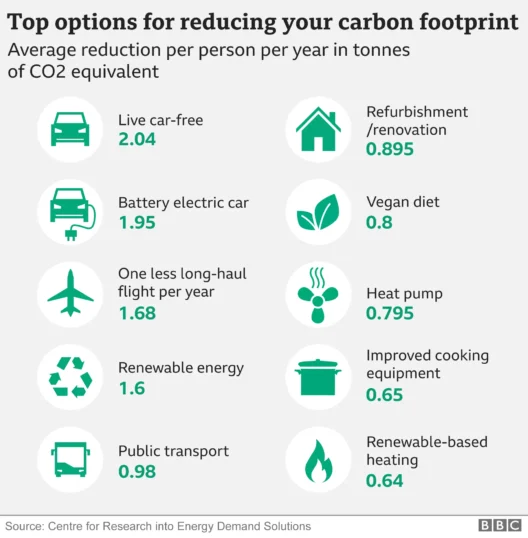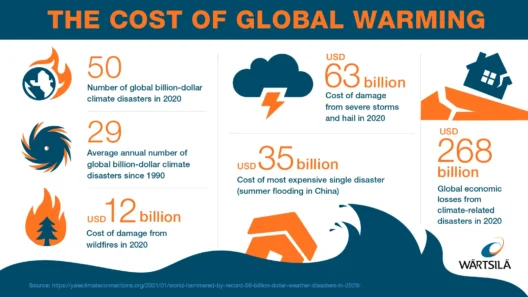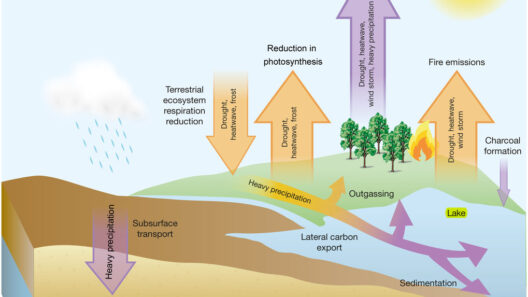Climate change is an omnipresent dilemma, affecting ecosystems, weather patterns, and human life across the globe. Understanding its causes is essential to combatting this intricate challenge. Here, we will delve into the top ten causes of climate change and explore actionable solutions to mitigate their impact.
At the forefront of climate alteration is the emission of greenhouse gases (GHGs). These gases—predominantly carbon dioxide (CO2), methane (CH4), and nitrous oxide (N2O)—trap heat in the atmosphere, creating a ‘greenhouse effect.’ This process is intensified by human activities, notably fossil fuel combustion for energy. Have you ever pondered what it would take to diminish our carbon footprint? Transitioning to renewable energy sources, such as wind or solar power, could dramatically reduce GHG emissions.
Deforestation is another critical contributor to climate change. When forests are dismantled for agricultural land or urban development, not only does carbon sequestration decrease, but the carbon stored in trees is released back into the atmosphere. Imagine a world where every tree lost is a promise of cleaner air forfeited. Initiatives like reforestation and afforestation can counteract this issue, restoring vital ecosystems while sequestering carbon.
A significant but often overlooked cause is agriculture, particularly livestock production. Cattle and other ruminants produce methane through digestion, and the associated farming practices contribute to land degradation and deforestation. Consider this: if every person reduced their meat consumption by just one meal per week, the cumulative effect could be monumental. Shifting towards plant-based diets or sustainable farming practices can alleviate some of the pressures that agriculture places on our planet.
Industrial processes are also substantial GHG emitters. Manufacturing, especially the production of cement, steel, and chemicals, releases copious amounts of CO2 into the atmosphere. It poses a question: how can we innovate our industries to reduce their environmental impact? The adoption of carbon capture and storage technologies presents a potential solution, capturing emissions at the source and preventing them from entering the atmosphere.
Waste management, particularly in landfills, emits potent greenhouse gases. Organic waste decomposes anaerobically, producing methane as a byproduct. What if we treated waste as a resource rather than refuse? Implementing robust recycling and composting programs can mitigate these emissions while simultaneously promoting circular economy principles.
Transportation is a major contributor to climate change, with vehicles powered by fossil fuels being a prime example. The challenge we face here is multi-faceted; how do we balance modern mobility with sustainability? Electrifying transportation networks and enhancing public transit systems can significantly reduce our reliance on gasoline and diesel, in turn decreasing our overall emissions.
Overpopulation and unsustainable urbanization exacerbate climate issues. As cities expand and populations grow, the demand for resources intensifies, leading to increased emissions. This raises an interesting dilemma: how can urban design evolve to become more sustainable? Embracing smart city concepts, green infrastructure, and energy-efficient buildings can foster resilience against climate change while improving the quality of urban life.
Natural resource extraction—from fossil fuels to minerals—creates extensive environmental impacts. Not only does this process often involve significant land degradation, but it also leads to CO2 emissions during extraction and processing. Should we consider the long-term implications of our resource consumption? Transitioning to sustainable practices in resource extraction, focusing on renewable materials like bamboo or recycled metals, can lessen the ecological footprint.
Climate change is also exacerbated by poor land use practices. Urban sprawl and unsustainable development often replace natural landscapes with impermeable surfaces that disrupt local ecosystems. What if we reverted to regenerative land management practices? Employing holistic land-use strategies can not only enhance biodiversity but also improve natural carbon sinks.
Lastly, the global economic structure heavily influences climate change. The relentless pursuit of growth often prioritizes short-term gains over ecological sustainability. This begs the question: can we reimagine economic systems to prioritize environmental health? Adopting circular economy models, which advocate for reusing and recycling resources, could pave the way for a more sustainable future.
Fortunately, despite the dire state of our planet, there is still hope. Individual actions compound; collective movements have the power to shift paradigms. Simple changes—like supporting local produce, advocating for policy reforms, or reducing energy consumption—can catalyze significant impacts and drive systemic change.
In conclusion, understanding the ten primary causes of climate change equips us with the knowledge to confront this colossal issue. Through innovation, collaboration, and conscientious habits, we can alleviate the pressures that have led to our current climate crisis. If we ask ourselves what we can fix, the nation’s response will be monumental. The time to act is now.






